1
2
3
4
5
6
7
8
9
10
11
12
13
14
15
16
17
18
19
20
21
22
23
24
25
26
27
28
29
30
31
32
33
34
35
36
37
38
39
40
41
42
43
44
45
46
47
48
49
50
51
52
53
54
55
56
57
58
59
60
61
62
63
64
65
66
67
68
69
70
71
72
73
74
75
76
77
78
79
80
81
82
83
84
85
86
87
88
89
90
91
92
93
94
95
96
97
98
99
100
101
102
103
104
105
106
107
108
109
110
111
112
113
114
115
116
117
118
119
120
121
122
123
124
125
126
127
128
129
130
131
132
133
134
135
136
137
138
139
140
141
142
143
144
145
146
147
148
149
150
151
152
153
154
155
156
157
158
159
160
161
162
163
164
165
166
167
168
169
170
171
172
173
174
175
176
177
178
179
180
181
|
<!--
title: Export and visualize Netdata metrics in Graphite
description: "Use Netdata to collect and export thousands of metrics to Graphite for long-term storage or further analysis."
image: /img/seo/guides/export/export-netdata-metrics-graphite.png
-->
import { OneLineInstallWget } from '@site/src/components/OneLineInstall/'
# Export and visualize Netdata metrics in Graphite
Collecting metrics is an essential part of monitoring any application, service, or infrastructure, but it's not the
final step for any developer, sysadmin, SRE, or DevOps engineer who's keeping an eye on things. To take meaningful
action on these metrics, you may need to develop a stack of monitoring tools that work in parallel to help you diagnose
anomalies and discover root causes faster.
We designed Netdata with interoperability in mind. The Agent collects thousands of metrics every second, and then what
you do with them is up to you. You
can [store metrics in the database engine](https://github.com/netdata/netdata/blob/master/docs/guides/longer-metrics-storage.md),
or send them to another time series database for long-term storage or further analysis using
Netdata's [exporting engine](https://github.com/netdata/netdata/blob/master/docs/export/external-databases.md).
In this guide, we'll show you how to export Netdata metrics to [Graphite](https://graphiteapp.org/) for long-term
storage and further analysis. Graphite is a free open-source software (FOSS) tool that collects graphs numeric
time-series data, such as all the metrics collected by the Netdata Agent itself. Using Netdata and Graphite together,
you get more visibility into the health and performance of your entire infrastructure.
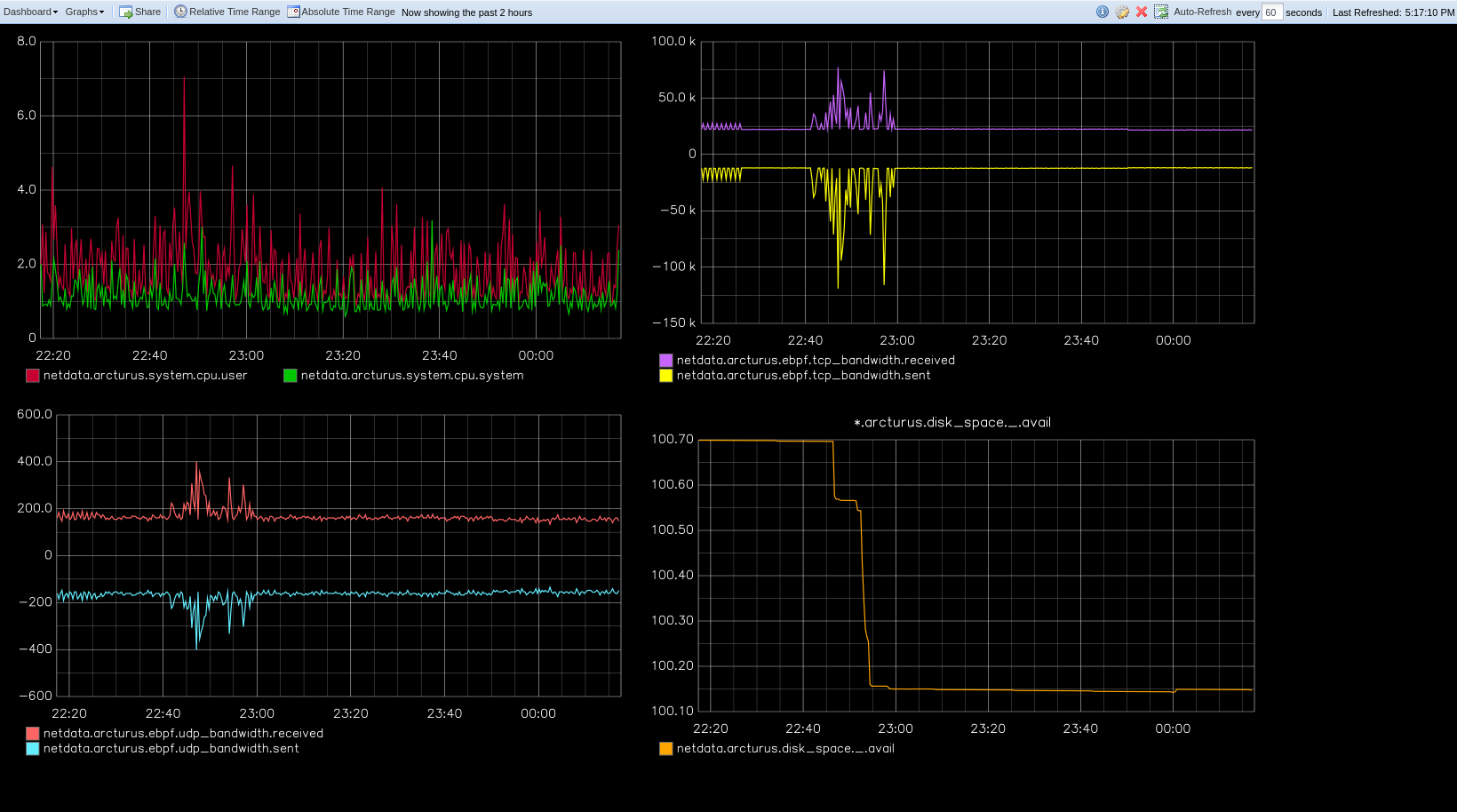
Let's get started.
## Install the Netdata Agent
If you don't have the Netdata Agent installed already, visit
the [installation guide](https://github.com/netdata/netdata/blob/master/packaging/installer/README.md)
for the recommended instructions for your system. In most cases, you can use the one-line installation script:
<OneLineInstallWget/>
Once installation finishes, open your browser and navigate to `http://NODE:19999`, replacing `NODE` with the IP address
or hostname of your system, to find the Agent dashboard.
## Install Graphite via Docker
For this guide, we'll install Graphite using Docker. See the [Docker documentation](https://docs.docker.com/get-docker/)
for details if you don't yet have it installed on your system.
> If you already have Graphite installed, skip this step. If you want to install via a different method, see the
> [Graphite installation docs](https://graphite.readthedocs.io/en/latest/install.html), with the caveat that some
> configuration settings may be different.
Start up the Graphite image with `docker run`.
```bash
docker run -d \
--name graphite \
--restart=always \
-p 80:80 \
-p 2003-2004:2003-2004 \
-p 2023-2024:2023-2024 \
-p 8125:8125/udp \
-p 8126:8126 \
graphiteapp/graphite-statsd
```
Open your browser and navigate to `http://NODE`, to see the Graphite interface. Nothing yet, but we'll fix that soon
enough.
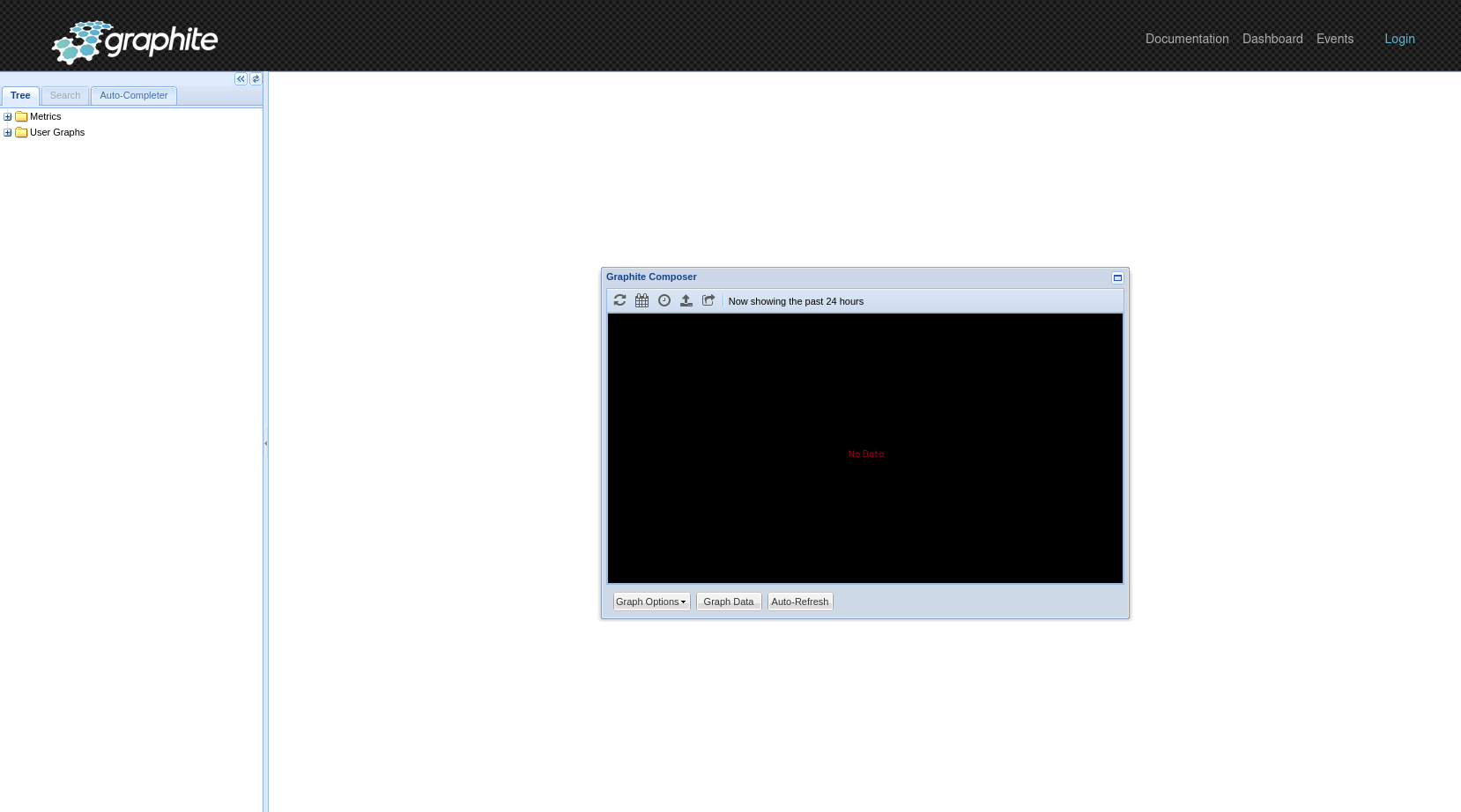
## Enable the Graphite exporting connector
You're now ready to begin exporting Netdata metrics to Graphite.
Begin by using `edit-config` to open the `exporting.conf` file.
```bash
cd /etc/netdata # Replace this path with your Netdata config directory
sudo ./edit-config exporting.conf
```
If you haven't already, enable the exporting engine by setting `enabled` to `yes` in the `[exporting:global]` section.
```conf
[exporting:global]
enabled = yes
```
Next, configure the connector. Find the `[graphite:my_graphite_instance]` example section and uncomment the line.
Replace `my_graphite_instance` with a name of your choice. Let's go with `[graphite:netdata]`. Set `enabled` to `yes`
and uncomment the line. Your configuration should now look like this:
```conf
[graphite:netdata]
enabled = yes
# destination = localhost
# data source = average
# prefix = netdata
# hostname = my_hostname
# update every = 10
# buffer on failures = 10
# timeout ms = 20000
# send names instead of ids = yes
# send charts matching = *
# send hosts matching = localhost *
```
Set the `destination` setting to `localhost:2003`. By default, the Docker image for Graphite listens on port `2003` for
incoming metrics. If you installed Graphite a different way, or tweaked the `docker run` command, you may need to change
the port accordingly.
```conf
[graphite:netdata]
enabled = yes
destination = localhost:2003
...
```
We'll not worry about the rest of the settings for now. Restart the Agent using `sudo systemctl restart netdata`, or the
[appropriate method](https://github.com/netdata/netdata/blob/master/docs/configure/start-stop-restart.md) for your
system, to spin up the exporting engine.
## See and organize Netdata metrics in Graphite
Head back to the Graphite interface again, then click on the **Dashboard** link to get started with Netdata's exported
metrics. You can also navigate directly to `http://NODE/dashboard`.
Let's switch the interface to help you understand which metrics Netdata is exporting to Graphite. Click on **Dashboard**
and **Configure UI**, then choose the **Tree** option. Refresh your browser to change the UI.
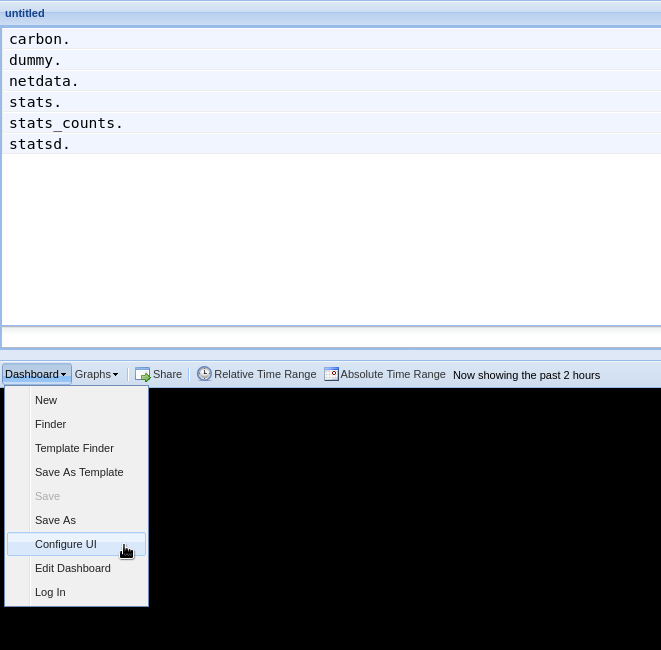
You should now see a tree of available contexts, including one that matches the hostname of the Agent exporting metrics.
In this example, the Agent's hostname is `arcturus`.
Let's add some system CPU charts so you can monitor the long-term health of your system. Click through the tree to find
**hostname → system → cpu** metrics, then click on the **user** context. A chart with metrics from that context appears
in the dashboard. Add a few other system CPU charts to flesh things out.
Next, let's combine one or two of these charts. Click and drag one chart onto the other, and wait until the green **Drop
to merge** dialog appears. Release to merge the charts.
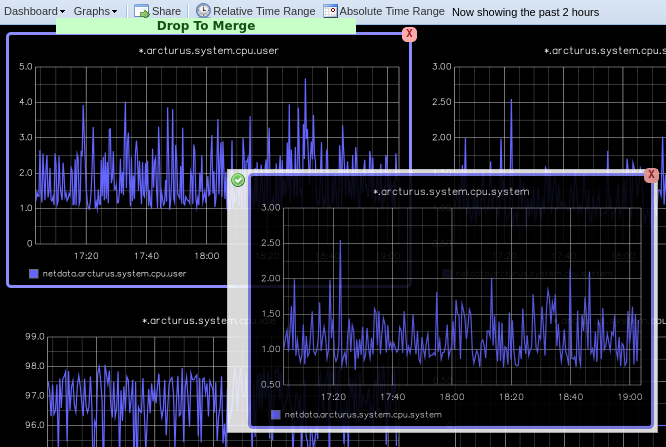
Finally, save your dashboard. Click **Dashboard**, then **Save As**, then choose a name. Your dashboard is now saved.
Of course, this is just the beginning of the customization you can do with Graphite. You can change the time range,
share your dashboard with others, or use the composer to customize the size and appearance of specific charts. Learn
more about adding, modifying, and combining graphs in
the [Graphite docs](https://graphite.readthedocs.io/en/latest/dashboard.html).
## Monitor the exporting engine
As soon as the exporting engine begins, Netdata begins reporting metrics about the system's health and performance.
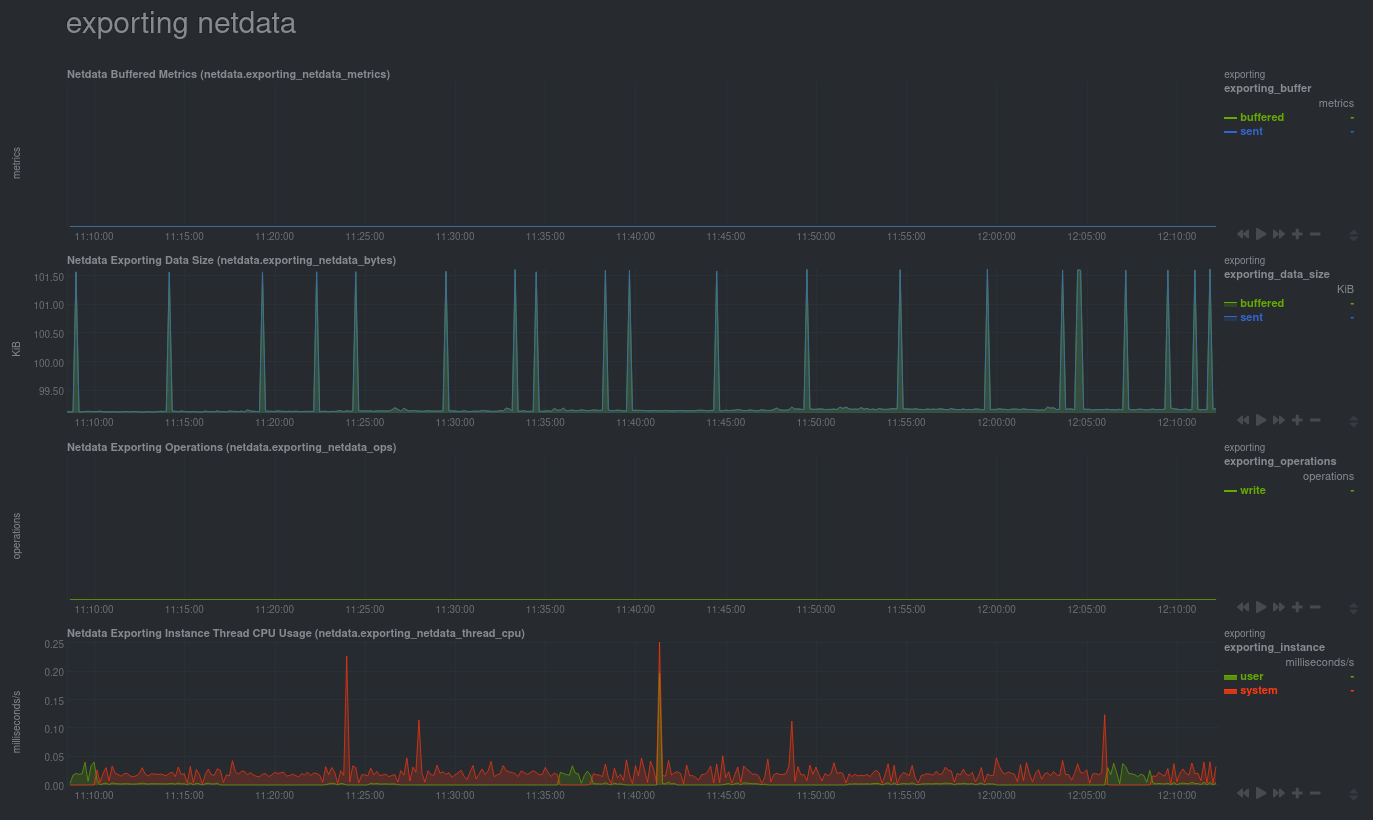
You can use these charts to verify that Netdata is properly exporting metrics to Graphite. You can even add these
exporting charts to your Graphite dashboard!
### Add exporting charts to Netdata Cloud
You can also show these exporting engine metrics on Netdata Cloud. If you don't have an account already,
go [sign in](https://app.netdata.cloud) and get started for free. If you need some help along the way, read
the [get started with Cloud guide](https://github.com/netdata/netdata/blob/master/docs/cloud/get-started.mdx).
Add more metrics to a War Room's Nodes view by clicking on the **Add metric** button, then typing `exporting` into the
context field. Choose the exporting contexts you want to add, then click **Add**. You'll see these charts alongside any
others you've customized in Netdata Cloud.
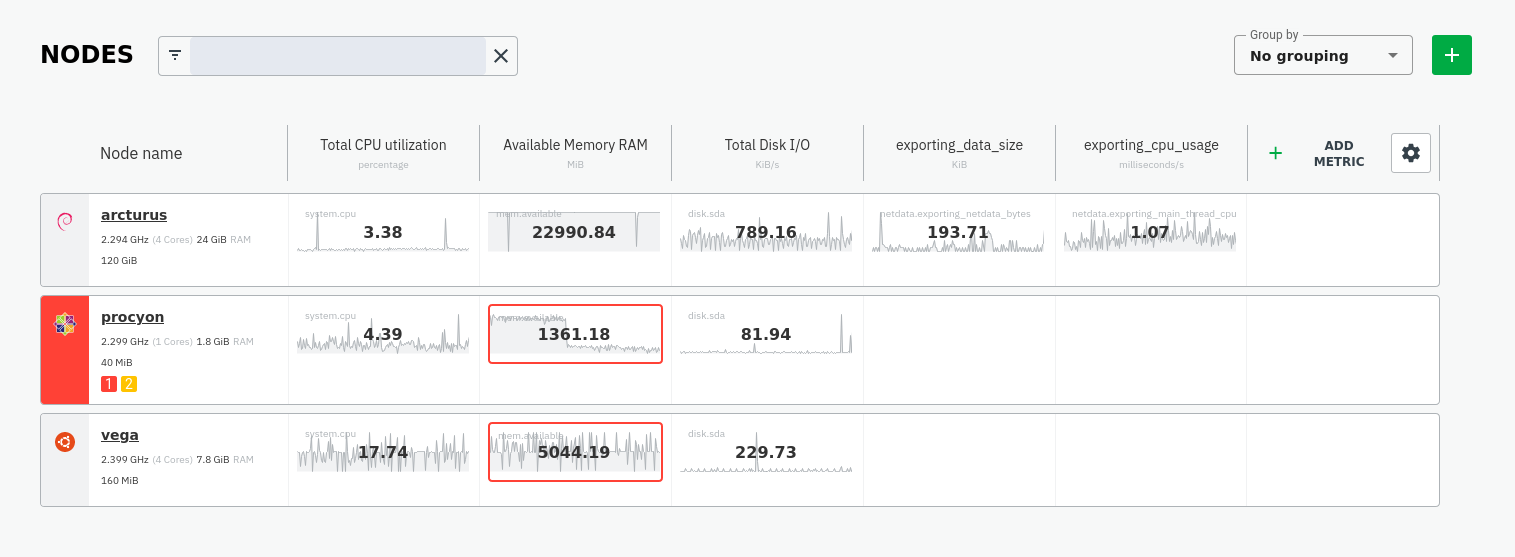
## What's next?
What you do with your exported metrics is entirely up to you, but as you might have seen in the Graphite connector
configuration block, there are many other ways to tweak and customize which metrics you export to Graphite and how
often.
For full details about each configuration option and what it does, see
the [exporting reference guide](https://github.com/netdata/netdata/blob/master/exporting/README.md).
|
